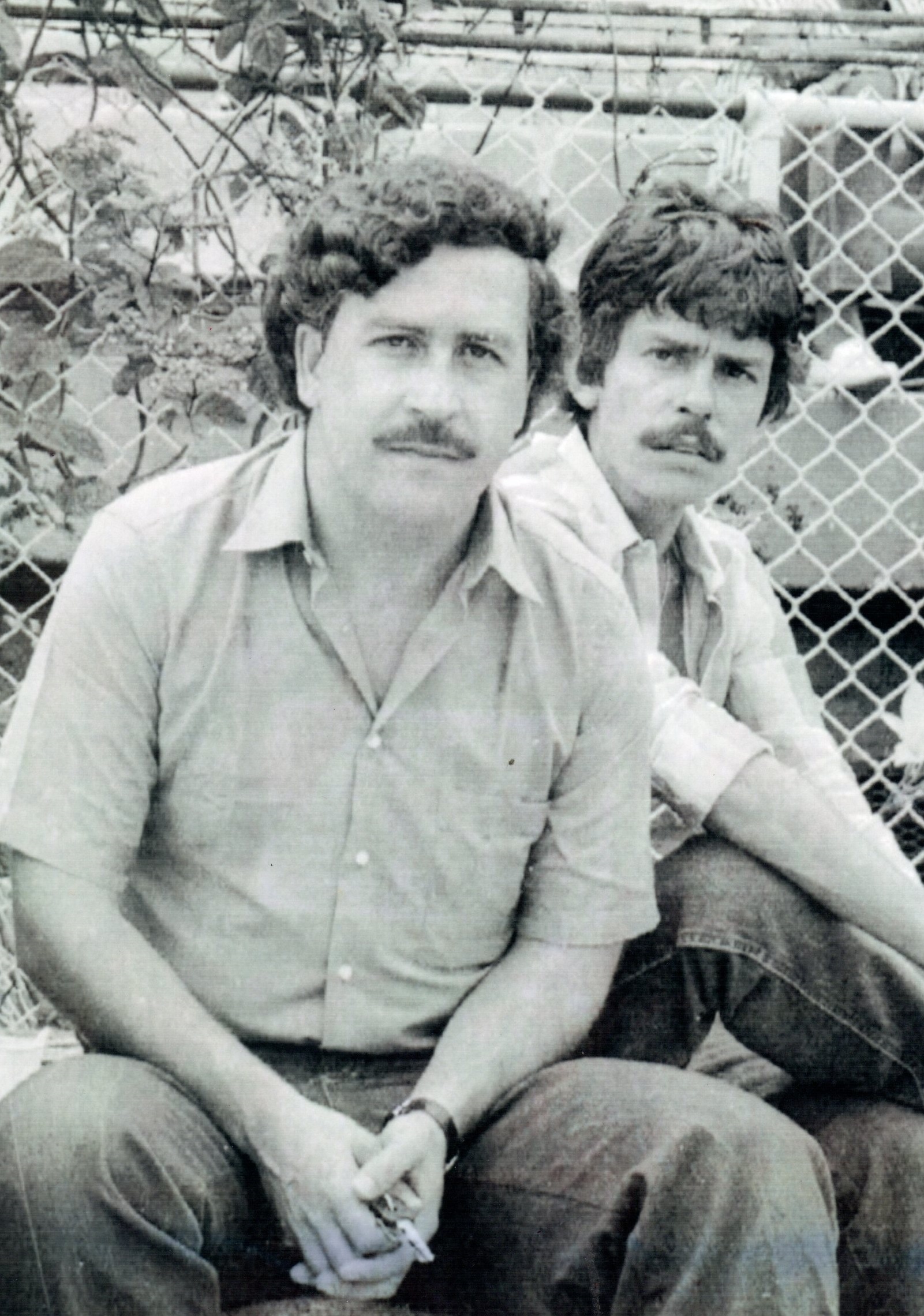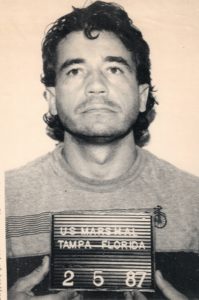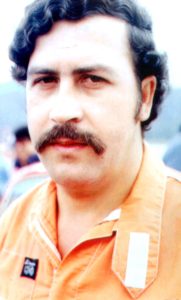Colombian drug lord Pablo Escobar spent seven years on Forbes list of world’s richest
Escobar shocked the business world when his criminal empire rivaled legal industries

In the summer of 1989, the world’s most wanted drug lord had narrowly averted assassination, challenged extradition treaties, dared the law to take him to war, and pulled in enough illicit cash to retain his spot on Forbes magazine’s coveted list of the world’s richest people.
Thirty years ago, Colombia’s Pablo Escobar was the undisputed king of the cocaine cowboys. This is a look back at that wild era of the 1980s, to explore the myths and the man who will likely be the proverbial poster boy of illicit drug kings for decades to come.
Escobar’s notoriety rocketed to a whole new level when, in 1987, Forbes etched the drug baron’s name onto a docket normally reserved for the top echelon of wealthy international industrialists and investors – the “billionaires.” It’s not clear if Escobar personally reveled in the wide recognition the magazine list gave him. Most accounts suggest that Escobar’s ambitions were predominantly focused on the interior borders of his homeland and becoming some sort of icon or hero within it. The outside world did not particularly concern him, except, of course, as a source of income.
Nevertheless, the global exposure certainly didn’t help the narco-trafficking underworld in its efforts to remain as anonymous and elusive as possible. In July 1989, Escobar made the prestigious magazine’s pages for a third year in a row, ranking No. 20 for an estimated $3 billion in profits from the lucrative cocaine business. He would end up being on the Forbes list for seven consecutive years. That year, 1989, also was a time of amplified violence, bloodshed and accusations.
Government agencies were well aware of certain individual major players in the Colombian drug game since the mid-1970s, and presumed many were joining forces by the 1980s.
The “Cocaïne Cartel,” as it was first dubbed, experienced alarmingly steady growth, with an estimated 80 percent of its consumer base being the insatiable U.S. market. Escobar’s name hadn’t begun making its way into North American newspapers until almost the mid-1980s (and didn’t reach headline status until the very end of the decade), but in Colombia, he was well known and had earned a reputation.

“The drug fortunes may be inestimable, but in Bogota they say Colombian ‘godfather’ Pablo Escobar, a one-time drug courier still in his 30s, must be worth at least $2 billion,” wrote Associated Press columnist Charles J. Hanley in 1985.
In characterizing the rise of Colombia’s “new trafficantes,” Hanley compared and contrasted the phenomenon to America’s previous underworld monarchy – the Mafia and Charles “Lucky” Luciano.
“By the late 1970s, as ‘coke’ became the drug of choice for affluent Americans, a younger generation of dealers, largely Colombian, had built up its ‘empires of blood and violence,’ as Colombian President Belisario Betancur now calls them; drug domains richer, more powerful, more sophisticated than the great crime organizer Luciano could have foreseen. Now Luciano’s Latin American heirs are themselves branching out, becoming the new international underworld of the 1980s.”
Escobar’s relative anonymity began to deteriorate, albeit at a slow burn, when the United States issued an indictment naming 11 purported traffickers, including four so-called “leaders” of the organization: Carlos Lehder (1949- ), Gonzalo Rodriguez Gacha, aka “The Mexican” (1947-1989), Jorge Luis Ochoa Vasquez (1947- ) and Pablo Emilio Escobar Gaviria (1949 – 1993).
“The way I see it,” a Medellin resident explained to a reporter in 1989, “if the United States didn’t consume drugs, there wouldn’t be drug traffickers.”
Indeed, some of the population saw Escobar as a Robin Hood figure. He was a generous philanthropist in his hometown of Medellin and beyond. On the flip side, Escobar’s enemies were growing. Besides the U.S. government turning up the heat with the Colombian government, an old ally turned foe – the Cali Cartel – was frustrated by the attention caused by violence and disagreements with Escobar, as was a fed up group of citizens – namely, the anti-Escobar group PEPES (Perseguidos por Pablo Escobar) .
In reality, Escobar was just one part of a once-well-oiled machine: the farmers in the Andes, the refiners in Colombia (Escobar’s role), the logistics (smugglers) in the Bahamas and the distributors in the United States. The first drug lord to make Forbes’ list had, however, become the face of everything wrong with the drug trade, and his so-called Medellin Cartel was immediately identified with narco-trafficking and narco-terrorism.
MayCay Beeler, professional pilot and co-author of convicted cartel smuggler Jack Reed’s memoir Buccaneer, said most of those involved in the organizations that worked with Escobar had “never even heard of the phrase ‘Medellin Cartel’” until the government and media began using it in 1987. Nevertheless, the sensationalism fueled the flames that were hot on Escobar’s heels. The Escobar situation had political, legal and public relations implications on a global scale. He was going to be made an example of, sooner or later.

Carrying the daunting weight of massive prices upon their heads, some of the drug lords, including Escobar, tried repeatedly to cut deals with the Colombian government, dating back as far as 1984. Although dialogue did occur between top officials and the narcos, it was in vain, and by 1989 Escobar had become furious.
“If one has to carry out total war, we will do it to the end,” Escobar warned in an interview with French newspaper Liberation in August.
Escobar persisted in reaching an agreement that included giving up property and money (contrary to some stories, he did not offer to pay off Colombia’s national debt). Officials publicly made it very clear there would be “no dialogue.” To that end, Escobar, aka El Doctor, aka El Padrino, spit verbal venom and sinister warnings. “There will be some deaths,” he told Liberation. “Always more deaths. I will give the orders. Some journalists and some magistrates – they will pay.”
Escobar eventually brokered a deal for surrender in 1991, but the whole thing was a comedy of errors. Most outrageously, Escobar had a prison – La Catedral – built to his specifications, and of course he escaped when authorities attempted to move him to another facility in 1992. Again he was on the lam, where he would remain until December 2, 1993.
The story of Escobar’s final moments had all the climactic elements of a blockbuster movie, but the facts are more murky, questionable and inconclusive. He had rarely strayed far from Medellin, perhaps ironic but not surprising.
As author Mark Bowden pointed out in Killing Pablo, the version of Escobar being gunned down while shooting it out with police on a rooftop “might be true,” but it certainly went against the kingpin’s character. Bowden described Escobar as “a runner, not a fighter.” He also noted just how elusive both Colombian and U.S. officials were about exactly who was present on the raid, either on the scene or in the shadows, and more importantly how the autopsy of Escobar’s body raised questions.
The coroner reported that bullets struck Escobar in the right leg and back and, “The third [bullet] entered at the center of his right ear and exited just in from of the left ear, passing straight through his brain.” Bowden noted the possibility that all three shots hit Escobar simultaneously or “the killing shot was administered after Pablo was down.”
Escobar died along with one bodyguard that day. But it was the drug kingpin’s body that was placed quickly on display like a trophy kill. Many were celebrating, some were not, and the news spread around the world quicker than a line of Escobar’s cocaine could be inhaled. The death of the world’s most infamous drug king did little to slow the illicit drug trade, which has only grown in scope and dollars since his demise.
Christian Cipollini is an organized crime historian and the award-winning author and creator of the comic book series LUCKY, based on the true story of Charles “Lucky” Luciano. Go to www.ganglandlegends.com.
Feedback or questions? Email blog@themobmuseum.org





